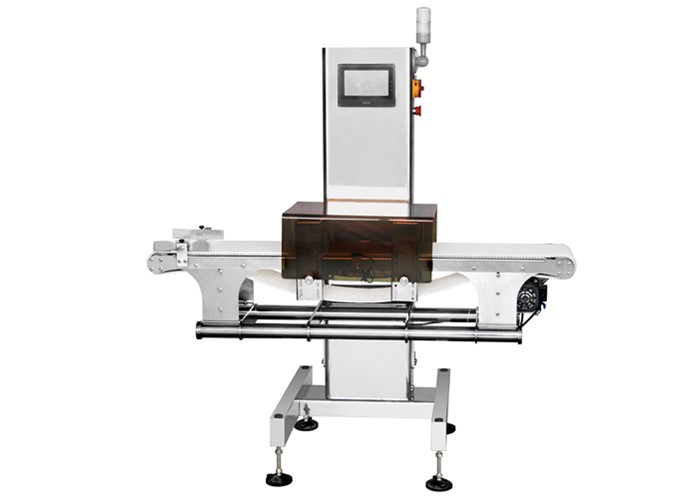Metal Detectors in Food Safety: Ensuring Quality and Reducing Contamination Risks
This article discusses the importance of metal detectors in food safety, focusing on how these technologies detect foreign objects to ensure high product quality. It explains the working principles of various metal detectors and how they are used across industries. Guangdong Kenwei, as a leader in this field, offers advanced solutions with high accuracy and efficiency.
As consumer awareness about food safety increases, the detection of foreign objects in food products has become a priority for manufacturers. Foreign body contamination is a significant concern, with studies showing that nearly 50% of food quality complaints stem from foreign object issues. To address this, food companies are increasingly relying on advanced detection technologies like gold inspection machines and X-ray systems. However, these systems can be costly, especially for smaller businesses. In contrast, metal detectors offer an affordable and highly effective solution for identifying metallic contaminants in food production.

1. Working Principles of Metal Detectors
Metal detectors, often referred to as gold detectors, play a crucial role in identifying metal contaminants in food, pharmaceuticals, cosmetics, and textiles. The most common type on the market today is the balanced coil metal detector, which uses a central transmitting coil and two receiving coils arranged symmetrically.
The detector generates a high-frequency magnetic field through the transmitting coil, which interacts with the metal contaminants present in the product. When metal enters the magnetic field, the balance of the system is disturbed, and a voltage signal is generated, which is used to trigger an alert.
The sensitivity of the detector is influenced by its operating frequency. Low frequencies (25kHz-800kHz) are better for detecting ferrous metals in wet products or metal film packaging. High-frequency systems are more sensitive to non-ferrous metals and are better suited for dry products.
Some modern metal detectors use dual-frequency technology to improve detection sensitivity, enabling them to simultaneously identify both ferromagnetic and non-ferromagnetic metals. This feature enhances the accuracy of detection, with the ability to detect iron and stainless steel objects down to below 0.8mm.
2. Types of Metal Detectors
Channel-Type Metal Detectors
Channel-type metal detectors are the most commonly used for online inspections. These detectors include a conveyor belt mechanism and an automatic rejection system that ejects contaminated products when metal is detected. They are widely used for finished and semi-finished products and offer a final inspection before shipping.
Channel metal detectors come in two variations:
-
Split-Channel Metal Detectors: Easy to install, especially in large equipment setups.
-
Integrated Channel Metal Detectors: Directly connected to the conveyor belt for seamless integration into production lines.
Falling Metal Detectors
Falling metal detectors are ideal for detecting contaminants in loose items such as tablets, capsules, granules, and powders. The product falls through the detection area, where metal impurities are quickly identified and rejected. These detectors are highly sensitive, reliable, and easy to maintain, making them suitable for high-speed production environments.
Pipeline Metal Detectors
Used primarily for liquid or paste products like sausages, sauces, or chewing gum, pipeline detectors provide continuous, real-time monitoring of fluid products. These detectors ensure that any metal contamination is identified and removed before the product moves further along the production line.
3. Common Sources of Foreign Objects in Food
Foreign contaminants in food products can come from various sources:
-
Human Factors: Items like jewelry, pens, or hairpins can inadvertently find their way into food during production.
-
Raw Materials: Foreign objects can be introduced during the cleaning or handling of raw materials.
-
Production Processes: Metal debris from machinery, such as welding slag or iron shavings, can contaminate products during production stages like cutting or mixing.
4. Factors Affecting Detection Accuracy
The accuracy of metal detectors can be influenced by several factors:
-
Opening Size: Larger detector openings can reduce the detection effectiveness, especially for small metallic contaminants.
-
Metal Type and Shape: Different metals (e.g., ferrous vs. non-ferrous) and shapes (e.g., spherical vs. irregular) affect detection sensitivity.
-
Operating Frequency: High-frequency detectors are more sensitive and can detect smaller contaminants in dry products, while low-frequency systems are better suited for wet products.
5. Choosing the Right Metal Detector for Your Needs
To meet the varying needs of the food industry, Guangdong Kenwei offers a range of metal detectors designed to deliver high sensitivity and reliability. Their products, including channel-type metal detectors, aluminum foil detectors, and metal detectors with checkweighers, are essential for companies seeking to ensure HACCP and GMP compliance.
Kenwei’s metal detectors are not only cost-effective but also feature advanced dual-frequency technology to provide superior detection of both ferrous and non-ferrous metals. These detectors are ideal for food, pharmaceutical, chemical, and other industries requiring stringent quality control.
Conclusion
As the food industry faces increasing demands for safety and quality, metal detectors remain a cornerstone technology for detecting and eliminating contaminants. With Guangdong Kenwei’s advanced detection systems, food companies can ensure higher standards of product safety and reduce the risk of costly recalls, all while maintaining efficiency and affordability in production.
Call to Action:
For more information on how Guangdong Kenwei’s metal detection systems can enhance your food safety protocols, contact us today to explore our full range of products.





About Price and payment
How is the price of Kenwei machines determined?
The price of Kenwei machines depends on several factors, including the type of machine, customization requirements, production volume, and any additional features or integrations. We provide tailored quotes based on your specific needs and requirements.
About Cooperation Process
How can I start a cooperation with Kenwei?
To begin a cooperation, simply contact our sales or customer service team via email or phone. You can also fill out the inquiry form on our website. Once we receive your request, a representative will get in touch with you to discuss your specific needs and provide you with a tailored solution.
How does Kenwei ensure the quality of its machines?
Kenwei has a stringent quality control system in place. Each machine is rigorously tested for precision, speed, and reliability before it is shipped.
About products customization
How long does it take to deliver a customized Kenwei machine?
The lead time for customized machines can vary based on the complexity of the customization, as well as production schedules. Generally, it takes 4-6 weeks to deliver a fully customized machine after design approval.
Can Kenwei machines support multiple languages?
Yes, we can customize the software interface to support multiple languages, making it easier for operators from different regions to use the machine.

This type of weigher is designed to handle the unique characteristics of pickles, ensuring precise measurements for packaging and distribution. It uses a vertical single screw mechanism to feed the pickles into the weighing system, allowing for efficient and consistent weighing. This technology is particularly useful in food processing and packaging facilities where precise portioning is essential for quality control and customer satisfaction. This specialized equipment is perfect for accurately measuring and dispensing pickles in a production line or packaging facility. The vertical design allows for efficient and precise filling of containers, while the single screw feeding mechanism ensures consistent and reliable weighing.

This counting machine offers a two-channel, eight-track electronic system with adjustable height, supporting bottle heights from 20 to 100mm. It requires no reset during fast line changes, making it perfect for counting products of various shapes. With a maximum speed of 4,000 particles per minute, it is ideal for pharmaceutical, food, chemical, plastic, healthcare, and other industries, delivering efficient and precise counting.


Enhance food safety with Kenwei’s Dropped Metal Detector for Powder Granules. This advanced food metal detector ensures precise detection in the food industry, safeguarding products and maintaining high quality standards throughout processing.
Contact Kenwei
Our company is located in areas with convenient transportation and developed economy. Our products are supplied in a timely manner. In the course of business operation, we always focus on customers.Have any questions or concerns about our products? Please leave us a message here, and our team will get back to you promptly.







Kenwei
Kenwei
Kenwei multi weigh
Kenwei
Kenwei
Kenwei